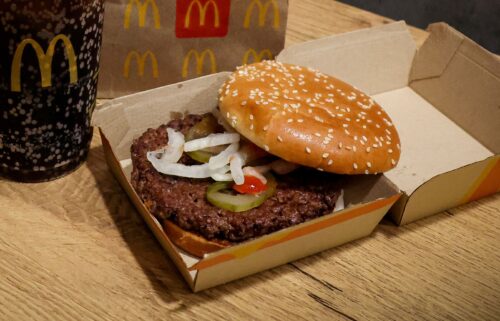Retail sales rebounded in February amid higher gas prices
By Bryan Mena, CNN
Washington (CNN) — Spending at US retailers rebounded last month as Americans shelled out more for gasoline.
Retail sales at stores, online and in restaurants rose 0.6% in February from the prior month, up from January’s revised 1.1% decline, the Commerce Department reported Thursday. That was slightly below economists’ expectations. The figures are adjusted for seasonal swings but not inflation.
January’s sharp decline was mostly attributed to the cold weather keeping consumers hunkered down at home. The broader US economy remains on strong footing, with employers continuing to hire and Americans still raking in strong wage gains. Retail spending has increased in seven of the past 10 months through February.
Sales were up across most categories last month, rising the most at home improvement stores, by a solid 2.2%. In February, car sales climbed 1.8%, purchases of electronics and appliances increased 1.5% and sales at restaurants rose 0.4%.
Gas station sales increased 0.9% in February from January.
Meanwhile, furniture sales dropped last month, falling 1.1% from January. Sales at grocery stores, clothing retailers and online were also down in February.
Spending is heavily influenced by the state of the labor market, which remains solid. American shoppers will likely continue to open their wallets as long as unemployment remains low and job growth continues to hum along.
Still, economists are expecting higher interest rates and dwindling pandemic savings to take some steam out of spending. That didn’t happen last year, because higher interest rates tend to affect the real economy with a lag. Recession fears could also prompt US consumers to pull back, but attitudes toward the economy improved greatly in the final months of 2023 and a growing number of analysts don’t think there’s an economic downturn around the corner.
“Consumers have the money, as inflation-adjusted incomes have been rising, so the question is, have consumers grown cautious?” said Robert Frick, corporate economist at Navy Federal Credit Union, in a note Thursday. “It’s too soon to say, but with inflation stuck for now above 3% and the job market growing tighter, that’s a possibility.”
“Still, the American consumer has been underestimated in the past and retail spending remains above the pre-pandemic trend, so no need to sound alarm bells yet,” he said.
What retailers are saying
By now, most retailers have reported their latest earnings results and provided analysts with their outlook for the year.
Target said last week that its sales fell last year for the first time since 2016, predicting a slow 2024 as consumers become fatigued by higher prices.
Indeed, American shoppers are still being squeezed by inflation, which remains above the Federal Reserve’s ideal target of 2%. Fed Chair Jerome Powell has said that low-income consumers and those living on a fixed income are typically hit the hardest whenever price increases start to pick up.
Shares of Dollar Tree, which owns discount-store chain Family Dollar, tumbled on Wednesday after the company said it plans to close nearly 1,000 stores and that it expects earnings in 2024 to be below what analysts were forecasting. Company executives also noted signs of US consumers being under stress.
“Persistent inflation and reduced government benefits continue to pressure the lower-income consumers that comprise a sizable portion of Family Dollar’s” customer base, Dollar Tree CEO Rick Dreiling said Wednesday on a call with analysts.
McDonald’s said this week that cash-strapped, lower-income Americans are rejecting the fast food chain and opting to cook at home instead.
“It’s a challenging consumer environment,” Ian Borden, McDonald’s chief financial officer, said at an investor conference on Wednesday, noting that many consumers are trying to manage inflation, higher interest rates and dwindling savings.
Sticky inflation, higher-for-longer rates
Wall Street’s biggest concern at the moment is the possibility that inflation’s slowdown might have stalled. It’s too soon to say, according to analysts, but that would mean that the Fed keeps interest rates at a 23-year high for longer than expected.
The Fed jacks up rates to slow demand and bring down inflation. Price increases are down substantially from the 40-year highs reached in the summer of 2022, but inflation’s descent has been rocky so far this year. That has dashed investors’ hopes that the central bank could begin to cut as soon as this month.
If inflation doesn’t continue to slow, that means Americans’ borrowing costs will likely remain elevated for longer. A few economists think it’s possible that the Fed may not cut interest rates at all this year, but Powell recently said rate cuts do remain on the table.
Fed officials convene next week to set monetary policy and they’re widely expected to hold rates steady for the fifth consecutive meeting.
The-CNN-Wire
™ & © 2024 Cable News Network, Inc., a Warner Bros. Discovery Company. All rights reserved.

